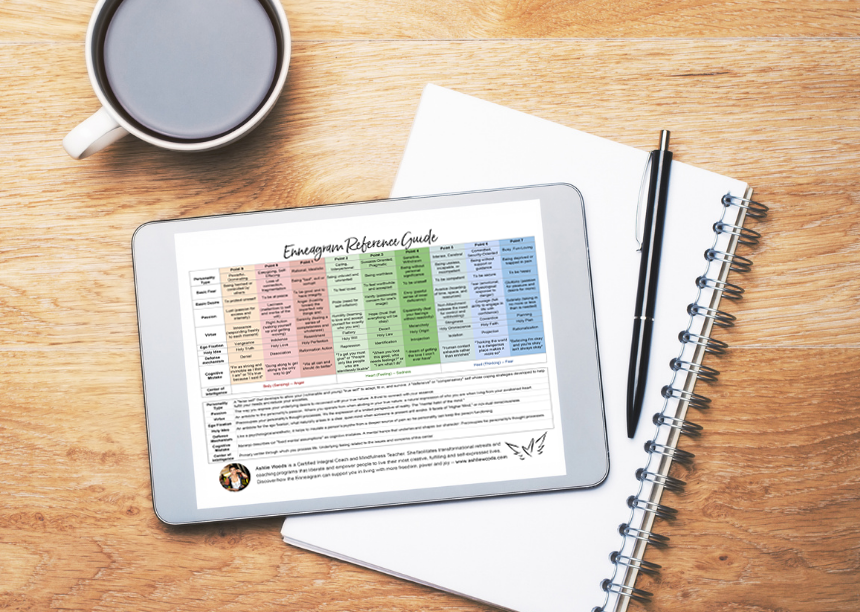Self-Preservation Five — "Castle"
The Self-Preservation Five is the most "Five-ish" of the Fives. These Fives express avarice through their passion for hiddenness or for having sanctuary. The name given to this subtype is "Castle," which communicates this person's need to be encastled - to be able to hide behind or be protected by walls. Psychologically (and sometimes physically), Self-Preservation Fives build thick walls to protect themselves from the world and from other people.
Self-Preservation Fives have a need for clearly defined boundaries. This personality is the clearest expression of the archetype of isolation and introversion. They have a need to be able to hide behind boundaries they can control, and to know they have a place of safety they can retreat to, in order to avoid feeling lost in the world. In focusing on finding shelter, they learn to survive inside walls - and they want to have everything inside those walls so that they don't have to venture out into the world. To them, the external world can seem hostile, inadequate, and brutal.
This quick reference guide captures the various aspects of each Enneagram Type including attributes, basic fears, desires, passions, virtues, fixations, defense mechanisms, and more!
Related to this need for the protection of clear boundaries, Self-Preservation Fives also focus a great deal of attention on how to survive free from the limitation of external shocks or surprises. They have a feeling of having to be on guard and a difficulty with expressing anger, though they may communicate anger passively by withdrawing and hiding or going silent.
Self-Preservation Fives' need for hiddenness can create difficulties with self-expression in general; this subtype is the least communicative of the three Five subtypes. Their passion for hiddenness also manifests in taking covert action: they act in secret so their actions do not compromise their ability to keep their guard up.
The problem with this stance, especially when it tends toward the extreme, is that living in an enclosure is not really compatible with having and meeting basic human needs. The Self-Preservation Five is the most withdrawn of the Fives, and, as a natural part of renouncing needs and wants, they try to get by on very little, especially when it comes to the emotional support that relationships provide. Self-Preservation Fives limit their needs and wants because they believe that every desire could open the door to their becoming dependent on others. Desires, then, are either sublimated in specific interests or activities or erased from consciousness. Self-Preservation Fives "live little," meaning they get by with few resources, which amounts to living small or poorly.
Naranjo explains that, normally, people have some ability to say, "I want that" - to express desires and do the work they need to do to get what they want - but these Fives cannot ask and cannot take. So they must rely on preserving what they are able to acquire themselves.
You can see the Self-Preservation Five characteristics clearly reflected in the work of Franz Kafka (who was probably a Self-Preservation Five himself), especially in the books The Castle and The Tremendous World I Have Inside My Head, and in a story titled "The Hunger Artist," in which the main character becomes a specialist at renunciation.
In relationships with others, Self-Preservation Fives avoid creating expectations or dependent relationships. They also avoid conflict, which is another way they detach from people. They do, however, typically experience a strong sense of attachment to a few places and people. To prevent conflict and manage contact with others, they may adapt to fit in to not be seen.
One Self-Preservation Five I know who can seem outwardly quite sociable explains that she watches how other people interact and then acts in similar ways, modeling what she does on what she observes, using her ability to adapt to what is expected of her as a kind of camouflage. If people don't see her as especially reserved, she reasons, they won't challenge her boundaries. However, this need to adapt can cause Self-Preservation Fives to feel resentful when they feel like they have to expend energy to fit in with others.
While they may at times choose to share feelings with a few trusted people in their lives, Self-Preservation Fives have strong inhibitions against showing aggression in particular. They will very seldom show their anger. However, they do have a kind of warmth and humor that is both a genuine expression of their internal sensitivity and a defensive construction or social shield. In social interactions, this can give their superficial acquaintances the feeling that a bond has been established when the Self-Preservation Five has merely been studying or placating them, not necessarily initiating a relationship. As the most Fivish of the Five subtypes, it is unlikely that this Five would be mistaken for another type.
Stacy, a Self-Preservation Five, speaks:
I am often told that I am a good listener. The truth is that I have become an expert on asking just the right kind of questions - those that will keep the other person talking while at the same time allowing me to maintain a comfortable distance from any topic that might require me to engage more fully. Under most circumstances, I do not like talking about myself, and someone who pushes me in this regard will feel intrusive. Within a small circle of close and trusted friends, however, I will share quite deeply. These are the people whose perspectives I seek out and whose actions I study so that I can navigate my way through the emotional world.
I rarely ask for favors. While I am happy to help out a friend in need, the reciprocal nature of favor-doing feels suffocating to me. I work very hard to make sure that my life is organized and structured in a way that will require little assistance from others. Only in the most extreme of circumstances will I reach out for help, and then I will find myself immediately buying a thank you gift to absolve myself of any perceived indebtedness. In general, feeling needed by others just feels like the other person is being too needy.
My most peaceful moments are when I have limited obligations and can be on my own schedule, independent, and at home. Time by myself is rejuvenating - and spending time in my home is particularly restorative. Intrusions and unexpected visitors are difficult to manage. I keep neighbors at an arm's length and avoid the yearly block party like the plague. When we first moved into our home, a neighbor repeatedly asked me to join the book club comprised of women from our neighborhood. Honestly, it was as if she was asking me to run away with her and join a circus - the idea was that strange and unappealing. I still hide from her when I see her around.
Specific Work For The Self-Preservation Five on the Path from Vice to Virtue
Self-Preservation Fives can travel the path from avarice to non-attachment by taking the risk to relax boundaries and barriers to connection more often, and by making more efforts to share their feelings with other people, even when it opens the door to fear and anxiety. People with this subtype can usefully work to notice how their beliefs about what's possible or desirable in relationships and in the world hold them back from getting the recognition or support that might help them grow. Rather than becoming fixated in resignation, challenge your sense of what's possible and imagine all the ways you might allow yourself to grow and expand if you didn't feel like you needed such high walls around you. Remind yourself that you can open up to letting people in more deeply and more often and still maintain a healthy sense of control in your life. Wake yourself up to ways in which you might be "living little," and realize that you don't necessarily have to make yourself smaller to feel okay. Open up to seeing ways you might share your gifts with the world if you were to spend more time outside the walls of your castle.
Sourced with permission from The Complete Enneagram by Beatrice Chestnut.
Type 1 Type 2 Type 3 Type 4 Type 5 Type 6 Type 7 Type 8 Type 9
Ashlie Woods
Director of Business Division & Lead Coach at Sourced
Ashlie is a transformational coach, retreat leader, dance lover and Enneagram enthusiast. She is passionate about facilitating experiences that liberate and empower people to live their fullest, more creative and self-expressed lives. She believes there is a life that wants to be lived through you and a purpose only you can fulfill.
She spent 6 years designing and delivering corporate training programs focused on leadership development and company culture before making the bold leap to start her own retreat-based business.
Ashlie now supports heart-centered business owners (coaches, consultants, creatives, healers) to market, sell and deliver their transformational work in the world using their unique magical gifts.




